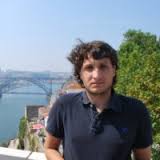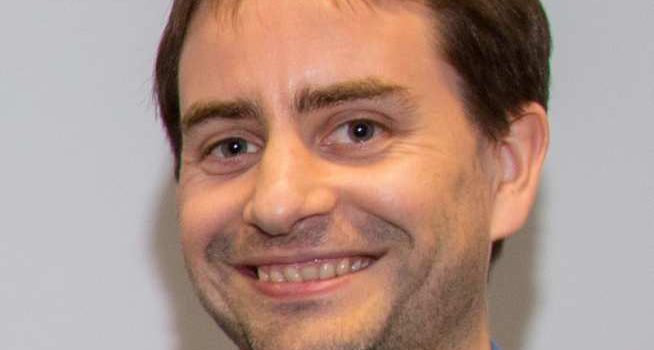
Title
Combination of Spatial Modulation and Full-Duplex for future Wireless transceivers
Laboratory
CITI Lab. Centre of Innovation in Telecommunications and Integration of Service (www.citilab.fr)
Contact
Guillaume Villemaud
guillaume.villemaud@insa-lyon.fr
Context and background
Usually in wireless communications, the wireless medium is a shared and limited resource. Current wireless standards always share the medium with Half-Duplex principle: the transmission and reception of signals are done in two separate time slots or two different frequency bands. Besides, the transceiver can only transmit and receive one signal at the same time at the same frequency.
More recent research works [1-3] are focusing on an alternate approach: instead of sharing the medium with Half-Duplex principle, the entire licensed frequency band is shared for simultaneous transmission and reception, what is called Full-Duplex. The major drawback of this kind of Full-Duplex system is therefore that a very high level of interference is created by the transceiver itself while trying to receive a distant signal (known as the self-interference). Besides, the concept of MIMO communications is widely used, but supposes a large increase in the complexity, cost and energy consumption of multi-antenna transceivers. Using Spatial Modulation is a very promising way of developing simpler MIMO transceivers [18], and could be particularly relevant in combination with Full-Duplex.
Our laboratory has already a strong and recognized background on Full-Duplex communications [4-9]. A first thesis was dedicated to this subject, paving the way for more realistic developments and applications. Besides, another thesis has started last year, to study the theoretical bounds of physical layer secrecy by using FD.
Therefore, we have already proposed an architecture enabling FD communications. To approach this goal, we use an active analog radio frequency self-interference cancellation (AARFSIC) method or a combination scheme of the AARFSIC and active digital self-interference cancellation in time domain (ADSICT) to cancel the strong self-interference (SI) induced by the Full-Duplex principle. Based on the Full-Duplex radio, we proposed a flexible Full-Duplex Dual-Band (FDDB) OFDM radio transceiver by combining the Dual-Band RF front-end with Full-Duplex.
These proposed architectures have been studied in theory and in simulations, thus one goal of this thesis will be to develop some practical experimentations of Full-Duplex communications, based on Vector Signal Generators and Vector Signal Analyzers, in connection with simulated parts for digital processing purpose. Furthermore, some experiments in the Cortexlab facility is also an objective of this work (www.cortexlab.fr).
Keywords
Wireless communications, RF architecture, digital processing, full-duplex, MIMO, Spatial modulation.
Main objectives
In the past years, considerable efforts have been devoted to prove the potential of using in-band full-duplex for future wireless communications, both from the hardware side and the networking side. The major difficulty of IBFD being the large amount of self-interference (SI), this interference is mitigated at three levels in the transceiver: antenna cancellation, analog cancellation, and digital cancellation. However, most of the proposed structures are inherently limited to fixed narrowband operations and almost no system-level demonstrations exist that prove the value of IBFD beyond a straightforward bi-directional link. Moreover, most of existing studies are based on theoretical analyses, simulations, or simple experimental testbeds.
Therefore, the goal of this thesis is threefold:
– To propose and develop some wideband and/or flexible radio architectures dedicated to full-duplex communications, using Spatial Modulation, from the antenna to the digital compensation implementation;
– To develop a complete study and optimization of this kind of architecture, starting from theoretical performance, going to simulation frameworks, and developing a proof of concept;
– To establish some reference scenarios to be tested with this proof of concept, for specific applications in practice beyond the usual toy-example of a straightforward bi-directional. In particular, we plan to explore and demonstrate applications such as secure communications through self-jamming, or the use of primary-user detection in Cognitive Radios.
Bottlenecks
As stated above, the main problem of Full-Duplex is to mitigate the strong Self-Interference created in the structure. Using Spatial Modulation enable to switch between several antennas to emit the signal of interest. Then, the challenge will be to receive a distant signal on unused antennas during this emission time, cancelling the Self-Interference and reconstructing the distant signal while switching at a high rate between the antennas.
Expected contributions
To the best of our knowledge, it exists no actual combination of Spatial modulation and Full-Duplex. Only some theoretical bounds of potential performance of such a combination was proposed in [17] but without taking into account any realistic RF architecture. Thus an actual and functional architecture combining Full-Duplex and Spatial Modulation would be a great breakthrough.
Scientific program and schedule
The overall schedule of the thesis is quite simple. The first six months will be dedicated to an exhaustive state-of-the-art not only on Full-Duplex systems and Spatial Modulation, but also on all progress on wideband and flexible radio systems and on interference cancellation algorithms. The remaining of the first year will focus on building the framework of theoretical studies and the associated simulation tools.
The second year will be devoted to extensive theoretical and simulation investigations, as long as choice of the required equipment for experimentations. By the end of this second year, everything should be fixed in order to be able to begin experimentations in the third year.
The third and final year of the thesis will see the production of scientific results via publications of the most significant works, extensive experimentations with feedback on theoretical and simulation studies and global drawing of the potentialities of exploitation of the proposed techniques. A large dissemination to the community is planned in order to encourage the use of these approaches in future communication networks. Finally the thesis manuscript will be written and the thesis will be defended.
Apart from the material part, the proposed tools are the Matlab and the Keysight’s ADS software. The thesis will take place within the Inria Socrate team of the CITI laboratory (http://www.citi-lab.fr/).
Supervisors
Guillaume Villemaud (HDR, 50%), Florin Hutu (50%)
Dissemination
Of course, a large dissemination of the proposed works will be ensured in international conferences, high quality journals and potentially via patents. Our goal is also to collaborate in COST actions, particularly we are strongly involved in the new IRACON action (merge of the NEWCOM# and COST IC1004) and therefore this will offer a good place of interaction with other European partners. We also expect that this project will be a first step to build a larger consortium for future H2020 calls and to participate in the definition of new standards, particularly to encourage the integration of Full-Duplex in the 5G networks.
Moreover, this work could be naturally applied to IoT scenarios, therefore the context of the SPIE IoT Chair hosted at the CITI laboratory could be a rich place of interaction and collaboration.
Expected profile of the candidate
Master of Sciences or Engineering degree in Telecommunications or Electrical Engineering with a strong background in radiocommunications, RF architectures and signal processing.
References
[1] A. Sabharwal, P. Schniter, D. Guo, D.W. Bliss, S. Rangarajan, R. Wichman, ‘In-band Full-duplex Wireless: Challenges and Opportunities’, IEEE Journal on Selected Areas in Communications (JSAC), 2014.
[2] B. Debaillie, D. J. van den Broek, C. Lavin, B. van Liempd, E. A. M. Klumperink, C. Palacios, J. Craninckx, B. Nauta, and A. Parssinen, “Analog/RF solutions enabling compact full-duplex radios,” IEEE Journal on Selected Areas in Communications (JSAC), 2014.
[3] H. Alves, C. Lima, P. Nardelli, R. Demo Souza, M. Latva-aho: “On the Average Spectral Efficiency of Interference-Limited Full-Duplex Networks”, CrownCom 2014, Oulu, Finland, June 2014.
[4] Z. Zhan and G. Villemaud, “Combination of Digital Self-Interference Cancellation and AARFSIC for Full-Duplex OFDM Wireless,” IEEE/CIC International Conference on Communications in China (ICCC), Shanghai, China, 13-15 Oct. 2014.
[5] Z. Zhan, G. Villemaud, F. Hutu and J-M. Gorce, “Digital Estimation and compensation of I/Q imbalance in Full-Duplex Dual-Band OFDM Radio,” The 25th IEEE International Symposium on Personal, Indoor and Mobile Radio Communications (PIMRC), Washington, DC, USA, 2-5 Sep. 2014.
[6] Z. Zhan, G. Villemaud, F. Hutu and J-M. Gorce, “Digital I/Q Imbalance Correction for Full-Duplex Dual-Band OFDM Radio Transceivers”, International Journal of Microwave and Wireless Technologies, 2015.
[7] Z. Zhan, G. Villemaud, J-M. Gorce, “Analysis and Reduction of the Impact of Thermal Noise on the Full-Duplex OFDM Radio”, IEEE Radio and Wireless Symposium (RWS) 2014, Newport Beach, Jan. 2014.
[8] Z. Zhan, G. Villemaud, J-M. Gorce, “Design and Evaluation of a Wideband Full-Duplex OFDM System Based on AASIC”, IEEE Personal, Indoor and Mobile Radio Communications Symposium, PIMRC2013, London, September 2013.
[9] Z. Wei, G. Villemaud, T. Risset, “Full Duplex Prototype of OFDM on GNURadio and USRPs”, IEEE Radio and Wireless Symposium (RWS) 2014, Newport Beach, Jan. 2014.
[10] Balatsoukas-Stimming, Alexios, et al. “On self-interference suppression methods for low-complexity full-duplex MIMO.” Signals, Systems and Computers, 2013 Asilomar Conference on. IEEE, 2013.
[11] Belanovic, Pavle, Alexios Balatsoukas-Stimming, and Andreas Burg. “A multipurpose testbed for full-duplex wireless communications.” Electronics, Circuits, and Systems (ICECS), 2013 IEEE 20th International Conference on. IEEE, 2013.
[12] Alexandris, K.; Balatsoukas-Stimming, A.; Burg, A., “Measurement-based characterization of residual self-interference on a full-duplex MIMO testbed,” Sensor Array and Multichannel Signal Processing Workshop (SAM), 2014 IEEE 8th , vol., no., pp.329,332, 22-25 June 2014.
[13] G. Villemaud, “Study of a Full-Duplex Dual-Band OFDM Transceiver”, DUPLO workshop, Crowncom 2014, Oulu, June 2014.
[14] Shanzhi Chen; Jian Zhao, “The requirements, challenges, and technologies for 5G of terrestrial mobile telecommunication,” Communications Magazine, IEEE , vol.52, no.5, pp.36,43, May 2014.
[15] Hossain, E., & Hasan, M. (2015). “5G Cellular: Key Enabling Technologies and Research Challenges”. arXiv preprint arXiv:1503.00674.
[16] G. Zheng, I. Krikidis, J. Li, A. P. Petropulu, and B. Ottersten, “Improving physical layer secrecy using full-duplex jamming receivers,” IEEE Trans. Signal Process., vol. 61, no. 20, pp. 4962–4974, 2013.
[17] B. Jiao, M. Wen, M. Ma and H. V. Poor, “Spatial Modulated Full Duplex,” in IEEE Wireless Communications Letters, vol. 3, no. 6, pp. 641-644, Dec. 2014.
[18] M. Di Renzo and H. Haas, “Performance analysis of Spatial Modulation,” 2010 5th International ICST Conference on Communications and Networking in China, Beijing, 2010


